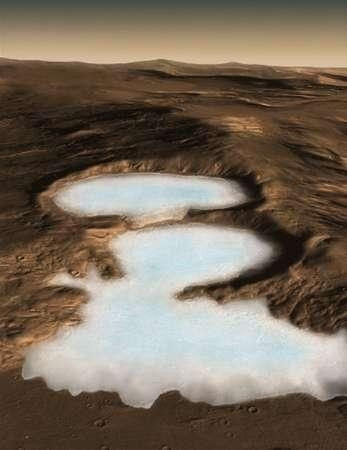Ancient Glacier Found On Mars [Watch Video]

An ancient glacier was present at the bottom of the Grand Canyon of Mars, a huge chasm. Scientists have found evidence of the ancient glacier.
According to Delhi Daily News, for quite some time, scientists had been speculating that the action of the glaciers has led to the formation of a massive canyon. The canyon called Valles Marineris stretched for about 4,000 kilometres along the surface of Mars. Since this theory lacks evidence, it was not accepted and the observations are highly controversial.
Researchers, Selby Cull, Jenna Myers and Nina Shmorhun from Bryn Mawr College in Pennsylvania and Patrick McGuire and Christoph Gross from the Freie Universitat in Berlin have said that they had found sulphate mineral jarosite within Valles Marineris and have mapped the jarosite along the canyon wall. The findings of the research were published in the journal Geology.
Satellite images were used to identify features that could have been possibly carved by glaciers of the past. This could be the first mineralogical evidence found of the glaciers.
Atmospheric sulphur is used as indicators to detect the environmental condition of Mars. This mineral is formed in diverse environments on Earth. In Mars, they are likely to be evaporative in nature.
The canyon was formed as a result of atmospheric sulphur getting trapped within the ice. Then the sulphur is warmed by the Sun, resulting in a sulphate of potassium and iron being left behind. The jarosite has been spotted halfway up a high cliff of the chasm on the western side.
The process is similar to that of the phenomenon on Earth within the glaciers of a Norwegian archipelago called Svalbard in the Arctic Ocean. If the theory turns out to be true, it would mean that the formation of most of the Martian surface was due to the slow movement of the glaciers.
It is to be noted that a similar process has been observed on Earth within the glaciers on Svalbard, a Norwegian archipelago in the Arctic Ocean. If the theory proves true, this would mean that much of the Martian surface was formed as a result of the slow movement of glaciers.
Video Source: YouTube/ The Mars Underground




















